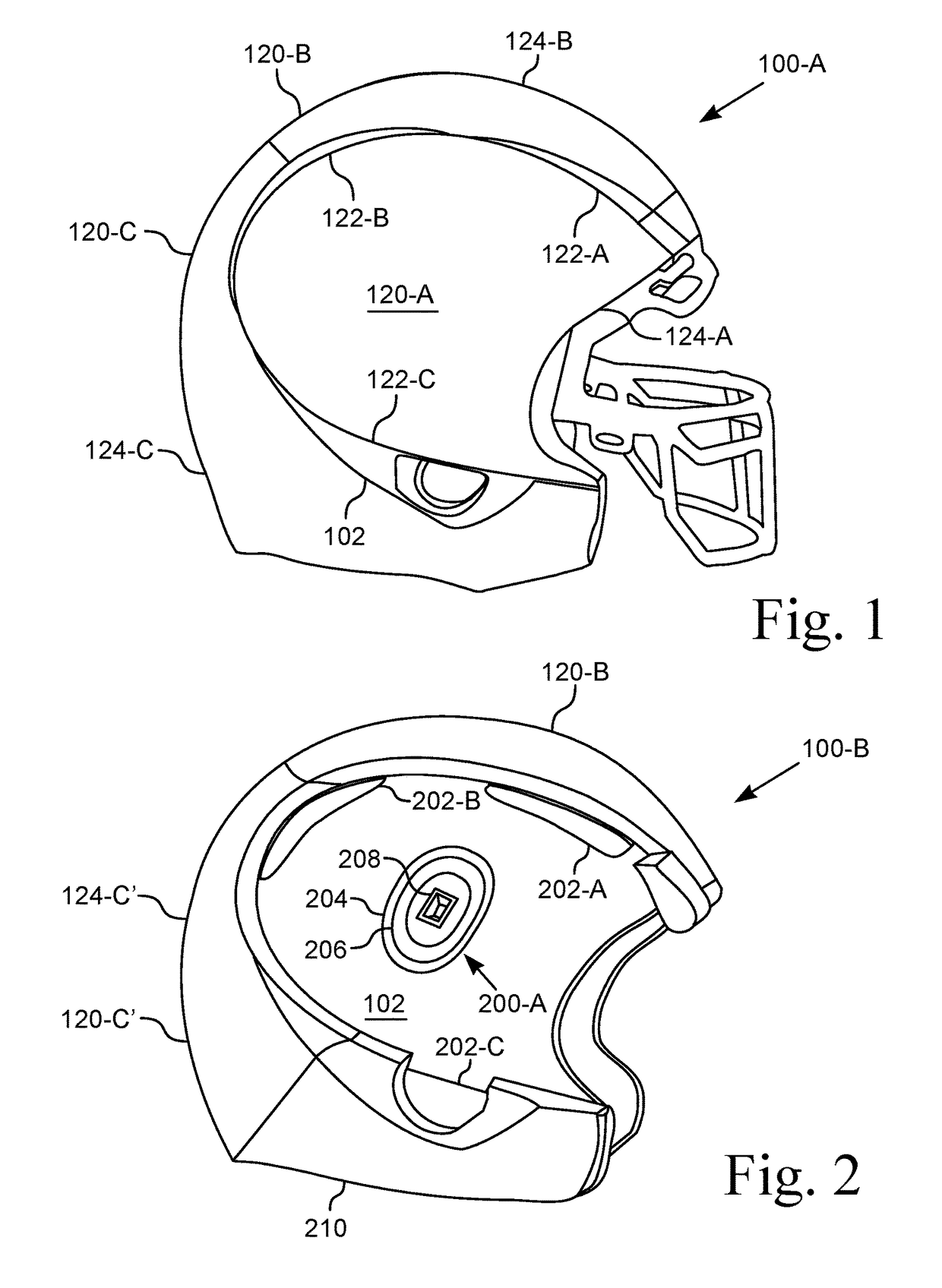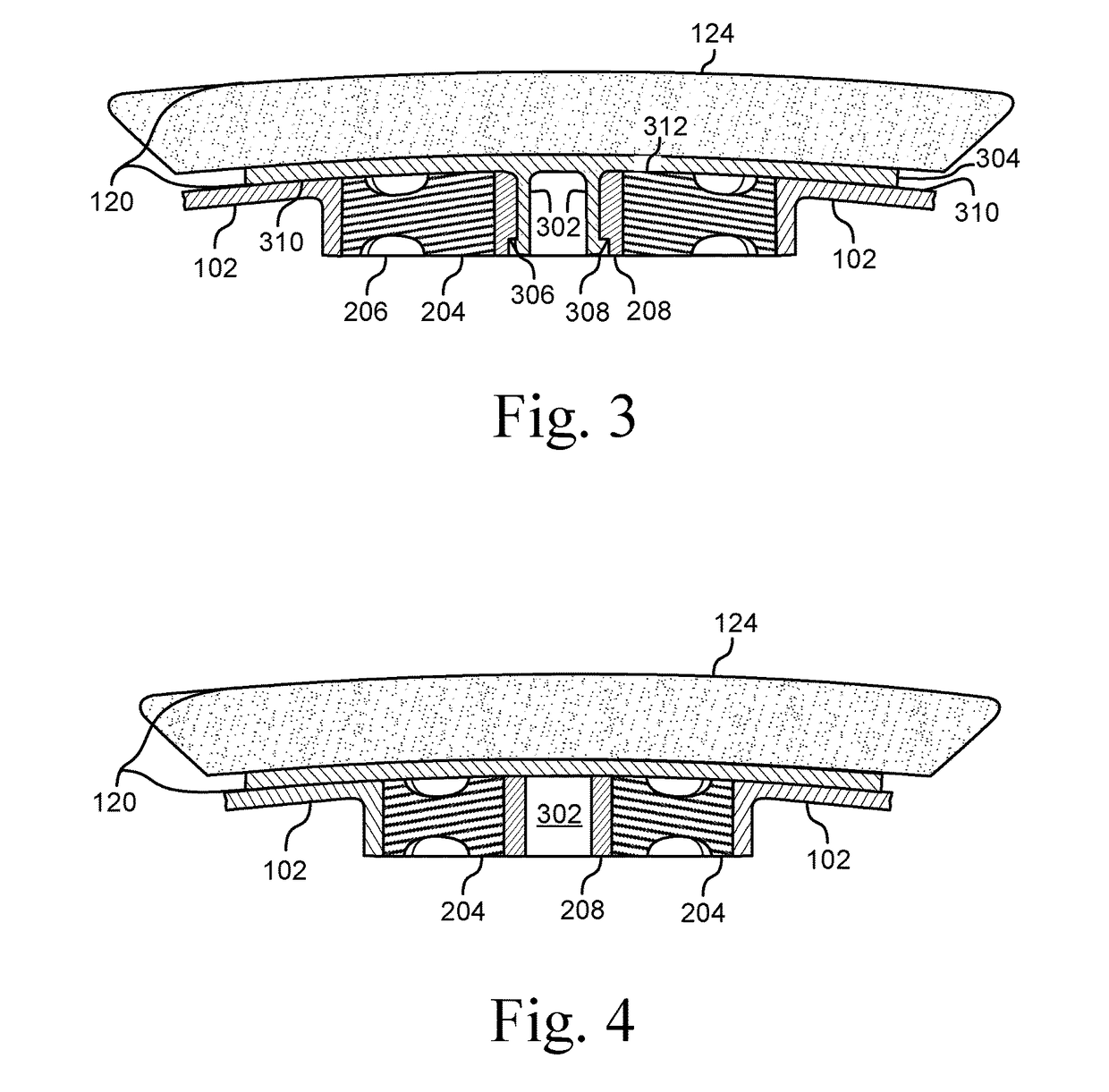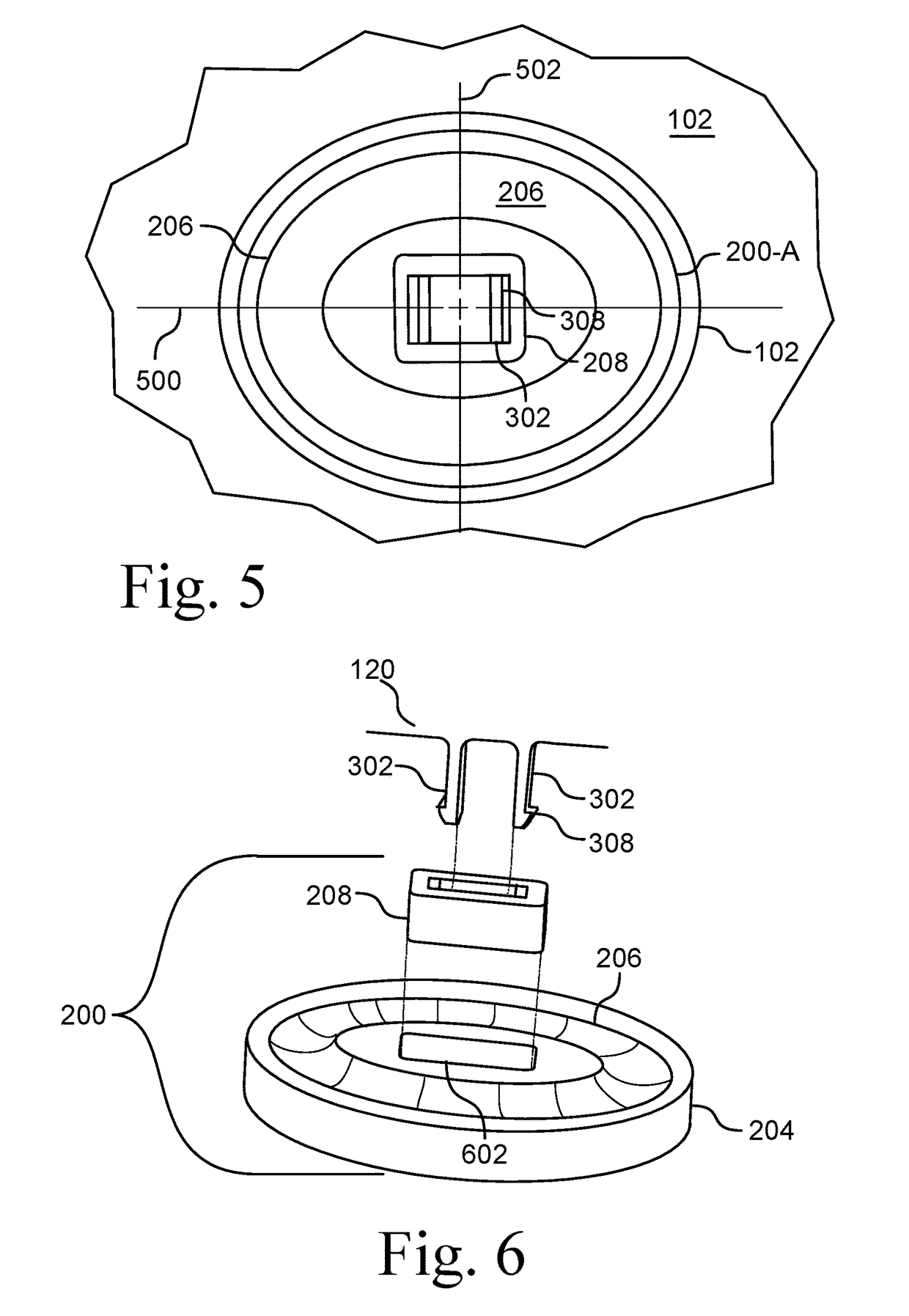Protective helmet for lateral and direct impacts
a protection helmet and direct impact technology, applied in the field of protective headgear, can solve the problems of serious brain damage, serious and long-term injuries and related problems, common concussions, etc., and achieve the effect of reducing the stress of assembly
- Summary
- Abstract
- Description
- Claims
- Application Information
AI Technical Summary
Benefits of technology
Problems solved by technology
Method used
Image
Examples
Embodiment Construction
[0023]Apparatus 100 for protecting a user from lateral and direct impacts to the head is disclosed. Various elements are described generically below and are uniquely identified when pertinent to the discussion, for example, structures 120 are generally indicated as 120 with particular embodiments and variations shown in the figures below having a suffix, for example, 120-A, 120-B, 120-C.
[0024]FIG. 1 illustrates a perspective view of one embodiment of the protective helmet 100-A. The helmet 100-A includes a frame 102 configured to fit a human head. The helmet 100-A also includes a plurality of structures 120 that are independently attached to the outside of the frame 102, including a side structure 120-A, a top structure 102-B, and a rear structure 120-C. Each structure 120 is attached to frame 102 in a manner that permits only lateral, i.e., rotational, movement of that structure 120 along and around the frame 102. Each structure 120 is configured to move independently of the other ...
PUM
 Login to View More
Login to View More Abstract
Description
Claims
Application Information
 Login to View More
Login to View More - R&D
- Intellectual Property
- Life Sciences
- Materials
- Tech Scout
- Unparalleled Data Quality
- Higher Quality Content
- 60% Fewer Hallucinations
Browse by: Latest US Patents, China's latest patents, Technical Efficacy Thesaurus, Application Domain, Technology Topic, Popular Technical Reports.
© 2025 PatSnap. All rights reserved.Legal|Privacy policy|Modern Slavery Act Transparency Statement|Sitemap|About US| Contact US: help@patsnap.com



